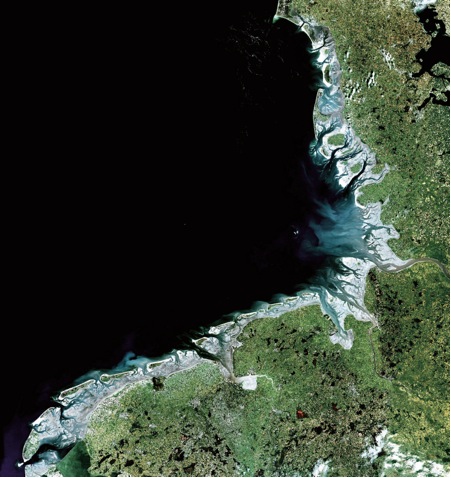Morphodynamics of Lagoons and Estuaries
Estuaries and lagoons such as the Western Scheldt and the tidal basins in the Wadden Sea are important nature areas in and around which many human activities take place. These tidal basins together with the adjacent coasts form a coherent system in terms of water movement, sediment budget and morphology. Sustainable management of the tidal basins involves ensuring safety against flooding, optimal economic use and preservation of the natural character of the system. Gas extraction in the Wadden Sea, Deepening the navigation channel in the Western Scheldt and the associated setback of the Hedwigepolder, and the reclamation project Maasvlakte II are examples of human interventions influencing the tidal basins, which all led to heated public debates. Every time it becomes again clear that better knowledge about the morphodynamic evolution of tidal basins under the influence of climate change and human activities is of great importance. Improve our knowledge in this area is also needed for the sustainable management of our coastal system in view of climate change.
Morphological evolutions of tidal basins are studied from different angles. With observations from the field, the morphology is described and empirical relationships are derived which can be used to estimate changes of tidal basins due to e.g. some human interventions. Semi-empirical modeling is still widely used, especially for predicting the long-term and large-scale effects of relative sea level rise and human interferences. Morphological changes in tidal basins are caused by sediment transport driven by water movement. By studying these processes on the basis of physical laws, we can also obtain insights into the morphological development. In recent years much progress is made with the process-based modeling of morphodynamic developments in tidal basins.
Morphodynamic research in the future should strive for bridging the gap between empirical observations and modeling on the one hand, and process-based modeling and studies on the other hand.

Wadden Sea and North Sea